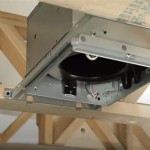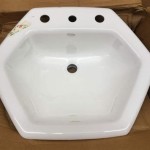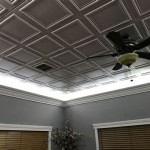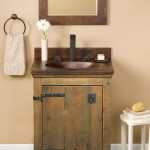How To Install A Bathroom Sink Vanity
Installing a new bathroom sink vanity can significantly update the aesthetic and functionality of a bathroom. This project, while manageable for a confident DIY enthusiast, requires careful planning, attention to detail, and a moderate level of plumbing knowledge. Before beginning, it is crucial to gather all necessary tools and materials, understand the existing plumbing configuration, and prepare the workspace. The following guide provides a comprehensive overview of the steps involved in installing a bathroom sink vanity, ensuring a successful and professional-looking outcome.
Preparation and Planning
Thorough preparation is paramount to a smooth and efficient vanity installation. This phase involves accurate measurements, careful material selection, and a clear understanding of the existing bathroom plumbing. Rushing this stage can lead to costly mistakes and unnecessary delays.
Accurate Measurements: Begin by measuring the available space in the bathroom where the new vanity will be installed. Consider the width, height, and depth. Note any obstructions, such as door swings, nearby fixtures, or architectural features. These measurements will dictate the maximum dimensions of the vanity that can be accommodated. It's advisable to allow for a small clearance on either side of the vanity to facilitate easier installation and prevent potential damage to adjacent walls.
Vanity Selection: With the dimensions in hand, select a vanity that fits the space and complements the bathroom’s overall style. Vanities are available in various materials, including wood, MDF (Medium-Density Fiberboard), and laminate. Consider the humidity levels in the bathroom when choosing the material, as some materials are more resistant to moisture damage than others. Also, decide on the desired style – freestanding, wall-mounted, or corner vanity – and ensure it aligns with the existing plumbing configuration.
Tool and Material Acquisition: Compile a comprehensive list of tools and materials required for the installation. Essential tools include a measuring tape, level, stud finder, drill, screwdriver (both Phillips and flathead), adjustable wrench, pipe wrench, putty knife, caulk gun, safety glasses, and work gloves. Necessary materials include the new vanity, supply lines, drain assembly (P-trap and tailpiece), plumber's putty, silicone caulk, shims, and optional items like wood screws or anchors for securing the vanity to the wall. Acquire all these items before starting the actual installation process to avoid interruptions and potential delays.
Shutting Off Water Supply: Locate the shut-off valves for both the hot and cold water supply lines leading to the existing sink. Turn these valves clockwise to completely shut off the water supply. If individual shut-off valves are not present, the main water supply to the house will need to be shut off. After shutting off the water, turn on the existing faucet to relieve any residual pressure in the pipes. This is a crucial step to prevent water damage during the disassembly of the old plumbing.
Clear the Workspace: Remove all items from the existing vanity and clear the surrounding area. Cover the floor with a drop cloth or protective sheeting to prevent scratches or damage during the installation process. Ensure adequate lighting in the workspace to facilitate clear visibility and accurate work.
Removal of the Existing Vanity and Plumbing
The careful removal of the existing vanity and plumbing is crucial to avoid damage to the surrounding walls, flooring, or existing plumbing lines. Take your time and proceed systematically to ensure that the removal process is clean and efficient.
Disconnecting the Plumbing: Place a bucket or basin underneath the drain connections to catch any remaining water. Use an adjustable wrench to loosen and disconnect the supply lines from the existing faucet. Carefully unscrew the drain connections, including the P-trap and tailpiece. Be prepared for some residual water to drain out. If the connections are corroded or difficult to loosen, penetrating oil can be applied to facilitate easier removal. Always wear gloves to protect your hands from grime and potential contaminants.
Removing the Old Vanity: Once the plumbing is disconnected, inspect the existing vanity for any screws or fasteners securing it to the wall or floor. Remove these fasteners using a screwdriver or drill. Gently detach the vanity from the wall or floor. If the vanity is caulked to the wall, use a utility knife to carefully score along the caulk lines to break the bond. Exercise caution to avoid damaging the wall surface. Depending on the size and weight of the vanity, assistance from another person may be required to safely remove it.
Cleaning the Area: After removing the old vanity, thoroughly clean the area. Remove any debris, dust, or adhesive residue from the wall and floor. Inspect the exposed plumbing lines and check for any signs of corrosion or leaks. If any problems are detected, address them before proceeding with the new vanity installation. Repairing or replacing damaged plumbing at this stage will prevent future issues and potential water damage.
Checking for Level: Use a level to check the floor and wall surfaces where the new vanity will be installed. If the surfaces are not level, use shims to create a level base for the new vanity. This is essential for ensuring proper alignment and stability. Secure the shims in place using construction adhesive or small nails. Failure to ensure a level surface can result in the vanity rocking or sitting unevenly, which can affect its functionality and appearance.
Installing the New Vanity
The installation of the new vanity requires careful alignment, secure fastening, and precise plumbing connections. Following the manufacturer’s instructions is crucial for ensuring proper installation and warranty compliance. Patience and attention to detail are key to achieving a professional-looking result.
Positioning the Vanity: Carefully position the new vanity in the designated space. Ensure that it is properly aligned with the walls and that it sits level on the floor. Use shims under the vanity legs or base, if necessary, to achieve a perfectly level position. Check the position of the drain and supply line openings to ensure they align with the existing plumbing connections. Minor adjustments may be necessary to ensure proper alignment.
Securing the Vanity: Once the vanity is properly positioned and leveled, secure it to the wall using screws or anchors. Use a stud finder to locate the wall studs behind the drywall. Drill pilot holes through the back of the vanity and into the wall studs. Insert screws through the vanity into the studs to securely fasten it to the wall. If wall studs are not accessible, use appropriate wall anchors to provide adequate support. Ensure that the screws or anchors are long enough to penetrate the wall and provide a secure hold. Avoid overtightening the screws, as this can damage the vanity or the wall.
Installing the Faucet and Drain: Install the faucet and drain assembly according to the manufacturer's instructions. Apply plumber's putty under the base of the faucet to create a watertight seal. Secure the faucet to the vanity top using the provided hardware. Insert the drain tailpiece into the drain opening and secure it with the provided hardware. Ensure that all connections are properly tightened to prevent leaks. Applying Teflon tape to the threads of the connections can help to ensure a watertight seal.
Connecting the Plumbing: Connect the supply lines from the shut-off valves to the faucet. Use new supply lines to ensure a reliable connection and prevent leaks. Tighten the connections using an adjustable wrench. Connect the drain tailpiece to the P-trap and then to the drainpipe in the wall. Ensure that all connections are properly tightened and aligned. Use plumber's putty or Teflon tape to seal the connections and prevent leaks. Double-check all connections before turning the water supply back on.
Applying Caulk: Apply a bead of silicone caulk along the seam where the vanity meets the wall and the floor. This will create a watertight seal and prevent water from seeping behind the vanity. Use a caulk gun to apply the caulk in a smooth, even bead. Smooth the caulk with a wet finger or a caulk smoothing tool for a professional-looking finish. Wipe away any excess caulk with a damp cloth. Allow the caulk to dry completely before using the sink.
Testing for Leaks: After completing the installation, slowly turn the water supply back on. Check all connections for leaks. If any leaks are detected, immediately turn off the water supply and tighten the connections. If the leaks persist, disassemble the connections and reapply plumber's putty or Teflon tape. Once all leaks are resolved, run the water to flush the drain and check for proper drainage. Ensure that the water drains freely and that there are no clogs or obstructions.
Final Adjustments and Cleanup: Make any necessary final adjustments to the vanity or plumbing. Ensure that the doors and drawers open and close smoothly. Clean up any debris or tools from the workspace. Dispose of any waste materials properly. Once the installation is complete, thoroughly inspect the vanity and surrounding area to ensure that everything is functioning properly and that the installation meets your expectations.
Potential Challenges and Troubleshooting
Even with careful planning and execution, unforeseen challenges can arise during the vanity installation process. Recognizing these potential issues and knowing how to address them can prevent delays and ensure a successful outcome.
Misaligned Plumbing: One common challenge is misaligned plumbing connections. The existing supply lines or drainpipe may not align perfectly with the new vanity’s openings. In such cases, flexible supply lines can provide some flexibility in connecting the water supply. For drain misalignments, adjustable P-traps or extension pipes can be used to compensate for the offset. If the misalignment is severe, it may be necessary to consult with a plumber to modify the existing plumbing lines.
Uneven Floors or Walls: Uneven floors or walls can make it difficult to achieve a level and stable installation. Using shims to level the vanity is a common solution. However, if the unevenness is excessive, it may be necessary to adjust the floor or wall before installing the vanity. This may involve patching the floor with leveling compound or shimming the wall studs to create a more even surface.
Damaged Plumbing: During the removal of the old vanity, it is possible to damage the existing plumbing lines. If this occurs, it is important to repair the damage immediately. Small leaks can be repaired with pipe sealant or Teflon tape. More significant damage may require replacing sections of the pipe. If you are not comfortable repairing the plumbing yourself, it is best to consult with a qualified plumber.
Tight Spaces: Working in a small bathroom can be challenging, especially when maneuvering bulky vanity. Ensure ample lighting and clearance around the workspace. It might be necessary to remove the bathroom door or temporarily relocate other fixtures to create more room. Consider using smaller tools that are easier to handle in confined spaces. Patience and careful planning are crucial in navigating tight spaces.

How To Install A Bathroom Vanity

12 Easy Steps To Install Bathroom Vanity And Sink

How To Install A Bathroom Vanity

How To Install A Vanity Forbes Home

How To Install Or Remove A Bathroom Vanity Homeserve Usa

How To Install Fit A Bathroom Sink Vanity Unit Tap And Waste Plumbing For Diy Enthusiasts

How To Install A Bathroom Sink Step By Guide

Tutorial How To Install A Bathroom Vanity The Diy Playbook

Tutorial How To Install A Bathroom Vanity The Diy Playbook

How To Install A Bathroom Sink Taskrabbit Blog
Related Posts







